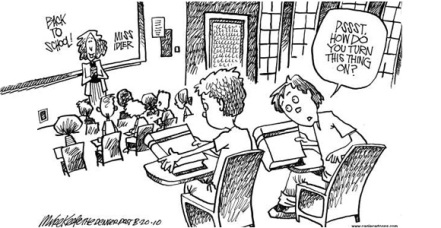In EDU6136 Content Methods this quarter, I have had the great privilege of learning about the pedagogical theories in the educational field that address Program Standard 4, Content Knowledge. The Content Knowledge standard requires that teachers use their understanding of not only their content area and its learning objectives or standards, but also know how best to teach the content to achieve those standards. This requires that teachers learn about and practice the pedagogical processes and resources available to truly impact student learning. This course has exposed me to a wide range of pedagogical approaches, but my internship placement has allowed me to actually apply several of these theories – from assessing prior knowledge, scaffolding, and deepening understanding – to practice.
While I had read Dochy et al. (1999), and believed I fully understood the importance of assessing students’ prior knowledge, I learned quickly in my internship that I wasn’t doing enough to apply this in practice. I was teaching my AP U.S. History students about Eugene V. Debs and the American Socialist Party, and had wrongly assumed we could dig right into a speech of his entitled “Winning the World” about how socialism would ultimately overtake capitalism. Luckily, I did begin the lesson with a KWL chart and quickly picked up on my students’ misguided impressions of the political theory of socialism – I saw my students had conflated the definition of socialism with that of communism. I ditched the planned lesson in order to work with students on coming up with a working definition of socialism. Had I assessed prior learning about the subject earlier, I would certainly have planned a Concept Instruction lesson to help students grapple with the theory on their own with prepared resources. I certainly learned my lesson, and learned that the next time I read about something related to pedagogical practice, I better take note and apply it in my internship!
I was reminded of this again when I read about scaffolding in this course. De Pol et al (2010), for instance, summarize decades’ worth of research on scaffolding in saying, “In general, scaffolding is construed as support given by a teacher to a student when performing a task that the student might otherwise not be able to accomplish” (p. 274). As I thought about scaffolding, I wondered how often I actually gave students too much support, and failed to really challenge them within Vygotsky’s Zone of Proximal Development (De Pol, 272). I thought, for instance, how in my AP U.S. History class we give the students time to grapple with review questions before taking a weekly quiz on the contents of the textbook chapter they have just read, and how I often answer several questions without challenging my students to think critically on their own first. De Pol (2012) and others works reminded me that teachers are really just there to facilitate learning, not to give the answers away. With time, and trying to more intentionally apply theory to my practice in my internship placement, I have begun to challenge my students to look in the text themselves or ask each other before coming to me. What a difference that has already made!
Later, as I read the works of Caram and Davis (2005), Goldsmith (2013), and Roberts and Billings (2009) about the importance of asking high quality questions to deepen student understanding, and welcoming questions, conversation, and debate to encourage student engagement, I already knew a little better. My mentor teacher had stressed to me the importance of question asking from day one. She had modeled for me the turn-and-talk in pairs technique, which allows students to bounce thoughts about a given question off of each other before offering them up to the class. I saw how this technique facilitated more open and thoughtful conversation. When I read of this very technique called “Think, Pair, Share” in Goldsmith’s (2013, p.50) research, I recognized it immediately. Additionally when I read Roberts and Billings (2009) work on Socratic seminars and stimulating “conversations that teach” (p.83), I found again that I knew this practice well. In my AP U.S. History course we have hosted seminar discussions on topics from the Declaration of Independence to what it is that Jacob Riis’s work and The Gangs of New York can reveal about the Gilded Age. Currently, I am planning a Socratic Seminar for my students (see below for directions) in which they need to come in as Civil Rights Movement activists and stay in character for the whole of the open discussion – presenting and defending their position on the proper course of the movement.

It is amazing how theory informs practice (and vice versa)! As I moved forward in the course, I recognized more and more of the strategies we studied, and more intentionally applied them in my internship classrooms. My Content Knowledge skills improved signficiantly as I learned and then practiced how best to teach the information in my classroom. By the time we got to talk about feedback at the end of the semester, for instance, I had already given my students in my AP Language and Composition class substantive comments on creative performance pieces they had presented for the entire class. I typed 1/3-page responses to each and every one of the students about their piece, encouraging them and challenging them with additional questions to grapple with. It took a very, very long time, but I was thrilled I had done it, and had again lined educational theory about skillful feedback to practice.
In going forward, I know I will more intentionally recognize and apply these content method techniques in my internship classrooms in order to further impact student learning. As they say, we learn as we go. In this program I have realized that I learn through both theory and practice, and this course has given me the opportunity to think critically about how best to pair the two.
References:
Billings, L. & Roberts, T. (2009). Speak up and listen. Kappan Magazine, October 2009 ed., pp. 81-85.
Caram, C & Davis, P. (2005). Inviting student engagement with questioning. Kappa Delti Pi Record, Fall 2005 ed., 19-23.
De Pol, J., Volman, M., and Beishusen, J. (2010). Scaffolding in teacher-student interaction: A decade of research. Educational Psychology Review. 22, pp. 271-296. DOI 10.1007/x10648-101-9127-6.
Dochy, Filip, et al. (1999). The relation between assessment practices and outcomes of studies: The case of research on prior knowledge. Review of Educational Research, Summer 1999, Vol. 69, No. 2, pp. 145-186.
Goldsmith, W. (2013). Enhancing classroom conversation for all students. Kappan Magazine, April 2013 ed., pp. 48-52.

 ons as you go. Avoid trick questions and phrase questions clearly and concisely. Ask questions that engage student interest; relate them back to their worlds. Think music, politics, social issues, etc..! Listen carefully to their responses and ask follow-up questions to encourage open conversation. (Caram and Davis, 2005).
ons as you go. Avoid trick questions and phrase questions clearly and concisely. Ask questions that engage student interest; relate them back to their worlds. Think music, politics, social issues, etc..! Listen carefully to their responses and ask follow-up questions to encourage open conversation. (Caram and Davis, 2005). 5.) Host Socratic seminars, and stimulate “conversations that teach” (Roberts and Billings, 2009, p.83).
5.) Host Socratic seminars, and stimulate “conversations that teach” (Roberts and Billings, 2009, p.83).